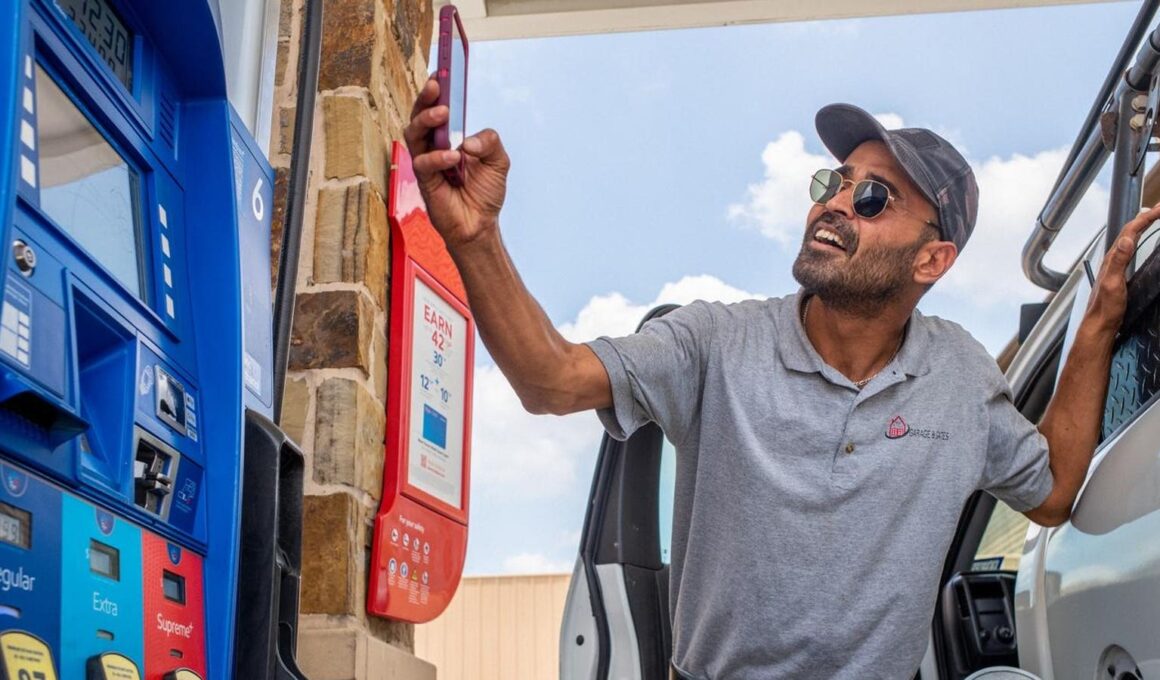Topline
The national average price for a gallon of gasoline dropped to a two-month low on Monday just above $3.40, as dwindling demand keeps prices at the pump from spiking, though analysts warn conflict in the Middle East and the threat of a major hurricane in the Gulf of Mexico could drive up oil and gas prices over the next few months.
The price gasoline dropped to a two-month low, while the price of diesel dropped to its lowest point … [+]
Key Facts
The average price of gasoline dropped to $3.41 on Monday, the lowest it’s been since June 9, according to data from over 150,000 gas stations in the U.S. compiled by GasBuddy ( AAA puts the national average slightly higher, at $3.44 per gallon).
That drop puts the national average 11.6 cents below where it was last month, 42.5 cents below where it was last year, and over $1.60 less expensive than the June 2022 all-time record over $5 per gallon.
Diesel prices have also plummeted to $3.72 per gallon, on average, the lowest price since January 2022.
Gas prices have been steadily falling since reaching a yearly high of $3.69 per gallon in mid-April, coinciding with a stagnating price of oil—which is refined into gasoline—after OPEC announced in June it would allow voluntary production cuts to be reversed, and as summer gas demand in the U.S. remained lower than in recent years, even falling in the weeks leading up to the July 4 holiday weekend.
Demand for gas has continued to fall over July and early August, hitting 8.97 million barrels per day in the week ending Aug. 2 — below the 9.25 million barrels observed the week before and well below the 9.30 million barrels one year ago, according to the Energy Information Administration.
One reason for the lower than average summer demand is the high price of other goods and services amid stubbornly high inflation that has driven up the cost of hotel fees and eating out, OPIS analyst Tom Kloza told Marketplace, adding another reason for the low demand could be the boosted fuel efficiency of newer cars, providing more mileage for each gallon of gas.
Patrick De Haan, head petroleum analyst at GasBuddy, said gas prices have kept dropping amid “muted” demand, which he said could keep pushing down the price drivers see at the pump, potentially to the lowest price of the summer.
Get Forbes Breaking News Text Alerts: We’re launching text message alerts so you’ll always know the biggest stories shaping the day’s headlines. Text “Alerts” to (201) 335-0739 or sign up here.
Big Number
$79. That’s the price per barrel for international benchmark Brent Crude Oil, up nearly 4% over the past five days, though still below its yearly peak in April above $91. The U.S. benchmark West Texas Intermediate shot up nearly 2% over the past five days to $78 per barrel.
What To Watch For
While drivers can catch a reprieve at the pump this week, their fortune might be short-lived, as analysts predict rising tensions in the oil-heavy Middle East could keep oil prices high, while the risk of a hurricane in the Gulf of Mexico could stunt production in the U.S. In a statement on Monday, De Haan attributes a recent rally in the price of oil to “rising geopolitical tensions in the Middle East and declining oil inventories,” while AAA spokesperson Andrew Gross warns Middle Eastern conflict and “some overseas economic uncertainty may mitigate any drop in oil prices.” Those warnings come as Israel continues its war in the Gaza Strip, and as a group of Iran-linked militant groups in Lebanon and Yemen exchange rocket fire with the Israel Defense Forces, leaving Western officials concerned over the potential of a wider regional war.
Where Is The Cheapest Gas In The U.s.?
Southern states boast some of the cheapest prices at the pump, led by Mississippi ($2.95), Tennessee ($3.01), Oklahoma ($3.03), Louisiana ($3.04), Texas ($3.04) and Arkansas ($3.05), according to AAA. Prices have remained high in the Great Lakes region and on the West Coast, the result of a number of factors, including higher state taxes on gasoline, refinery maintenance and transportation costs. The most expensive gas can be found in Hawaii, where a gallon goes for $4.66, above California ($4.60), Washington ($4.23), Nevada ($3.94), Illinois ($3.89), Oregon ($3.88) and Alaska ($3.76).
Further Reading
“>








